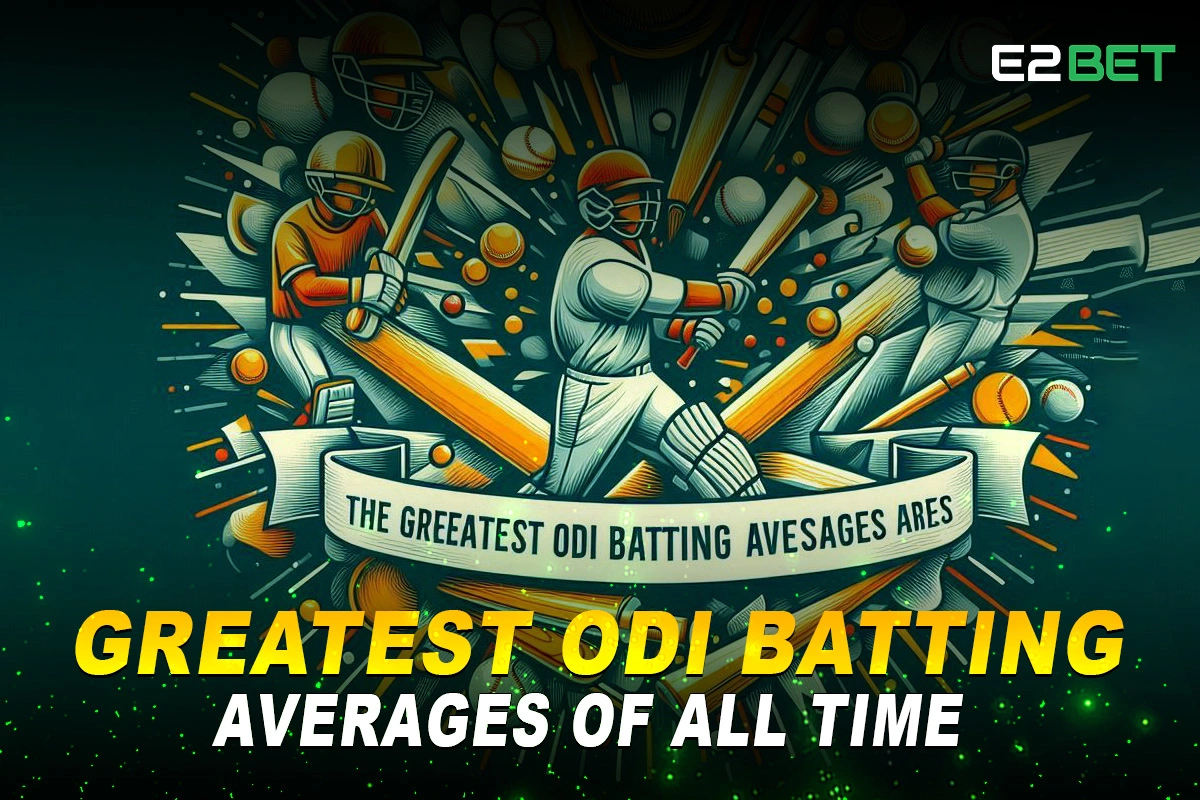Cricket fans often debate who holds the best average in ODI cricket. One way to gauge consistency is to look at the batting average. It shows how many runs a batter scores on average before getting out. Let’s explore the history, the greats of the game, and what makes the highest average in ODI such a coveted achievement.
What is a Batting Average in Cricket?
By dividing the amount of runs scored by the number of times a batter has been removed, one may get the batting average. For example:
Batting Average = Total Runs / Times Out
More batting averages in ODIs indicate consistency and dependability.
Importance of Batting Average in ODI Cricket
The highest ODI average batsman is often regarded as the most dependable. A good batting average proves the batter’s ability to score runs and stay at the crease for longer periods.

Legends With the Best Average in ODI
Virat Kohli: The Chase Master
Virat Kohli’s incredible average of over 57 in ODIs makes him one of the greatest. He chases objectives with unrivaled consistency.
Michael Bevan: The Original Finisher
Bevan was an important player for Australia, averaging 53.58. He mastered the art of finishing games under pressure.
Sachin Tendulkar: The Master Blaster
Though known for his staggering records, Sachin Tendulkar’s ODI average of 44.83 over 463 matches is remarkable. His consistency laid the foundation for many of India’s victories.
AB de Villiers: The Versatile Genius
The average for AB de Villiers was around 53. He was one of the most dangerous batsmen in ODI cricket because of his versatility and inventiveness.
The Role of Wicket Keepers in ODI Batting
Wicketkeepers like MS Dhoni have proven their batting prowess. Dhoni’s average of over 50 in ODIs, combined with his skills behind the stumps, made him a game-changer.
How ODI Cricket Has Evolved
The best average in ODI cricket has evolved with changing rules and formats. Powerplays, better bats, and flat pitches have allowed players to score more freely.
Why Test Matches Are Different
Batting in Test matches is about patience and technique. In ODIs, batters focus more on scoring quickly and maintaining a balance between runs and strike rate. The shift from Tests to ODIs shows how players adapt their game.
Emerging Players With the Highest ODI Average
Shubman Gill: The Rising Star
Gill’s average of over 60 makes him the talk of the cricketing world. He can rule the game for many years.
Joe Root: Consistent Across Formats
While Root is known for his test records, his ability to adapt to ODIs makes him stand out.
Key Factors Affecting Batting Averages
Pitch Conditions
Flat pitches in ODIs often lead to higher averages, while bowler-friendly tracks test a player’s technique.
Opposition Strength
Facing world-class bowlers like Glenn McGrath or Jasprit Bumrah can impact a player’s average.
Player Role
Openers face the new ball, while middle-order batters handle the pressure of chasing. Finishers like Bevan or Dhoni thrive in the death overs.
Sachin Tendulkar’s Impact on ODI Batting
Sachin Tendulkar is synonymous with ODI cricket. His career saw 49 ODI centuries and an unmatched hunger for runs. Though his average is not the highest, his contributions are unparalleled.
Why Batting Average Matters in World Cups
In ODI cricket, the World Cup is the greatest platform. Players with high averages, like Tendulkar and Kohli, shine under pressure. Consistency in ICC tournaments separates the greats from the rest.
Players Who Dominate Both Tests and ODIs
While some excel only in one format, others dominate both. Tendulkar and Kohli have shown remarkable consistency in Test matches and ODIs, proving their adaptability.
Challenges in Maintaining a High Average
A high batting average requires:
- Consistency
- Fitness
- The capacity to adjust to various bowlers and situations
Injuries or loss of form can bring averages down.
Conclusion
The highest average in ODI cricket is a benchmark of greatness. Players like Kohli, Bevan, and Tendulkar have set the standard for others to follow. As cricket continues to evolve, maintaining a high average remains a badge of honor for any batter.
FAQs
1. In ODIs, what constitutes a good batting average?
Batting averages above 40 are considered good, and those over 50 are considered extraordinary.
2. Who has the highest ODI average batsman record?
Shubman Gill currently has one of the highest averages among active players.
3. How is the batting average different in ODIs and Test matches?
In ODIs, batters focus on scoring quickly, while Test matches demand more patience and technique.
4. Why is Sachin Tendulkar considered the best despite not having the highest average?
Tendulkar’s consistency, centuries, and match-winning performances make him a cricketing icon.
5. Do wicketkeepers contribute to high batting averages?
Yes, wicketkeepers like MS Dhoni have shown exceptional batting skills, combining consistency with leadership.